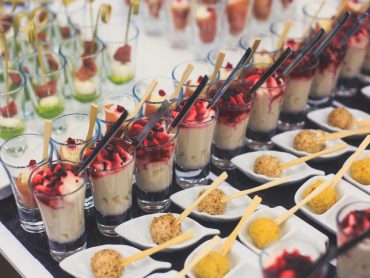In Vino Veritas Part XXV – How To Enhance the Sale of Wine
Now that it’s the 25th edition of this series, it’s about time we do something special. Delving into articles on specific grapes or countries, the aim was to provide background information on various wines from around the world so that you could entice consumers towards a purchase. But somewhere along the line, the goal of selling more wine took a backseat to the historic, climatic and varietal details.
Discussing wine at dinner with friends and colleagues over the years, what becomes quite apparent is that those who work in the restaurant or hotel business have vastly superior wine knowledge than the layman. In fact, most people couldn’t tell you the difference in taste between a cabernet sauvignon and a merlot. For them, it’s just red or white, or on special occasions, a sparkling white.
How then do you get the upsell? How do you convince a patron to go from drinking by the glass to purchasing a bottle for a table? How do you get someone to opt for one of the more expensive listings instead of, say, the cheapest red on the menu?
When I’m dining out with a party of four or more, it’s easy for us to go through two bottles. When ordering the second one, we’ll try something a tad more esoteric merely out of curiosity about the varietal and country of origin. So, for someone without this ardent oenophilic fervor, what drives him or her to purchase a second bottle at 250-300% markup?
Wine is a good business for hotels to be in, and most of that lofty markup helps cover sunken costs that the food simply can’t. But customers don’t see those hidden costs, nor do they care. All they see is an exorbitant price tag. It’s your job to justify that price tag by clearly explaining the benefits through narrative about the unique qualities of each wine’s color, taste, history, geographic, pairing complements and so on.
Think of it as tableside content marketing. Anytime you educate a consumer on wine, you are giving them value much the same as posting a blog entry to your website. You’re proffering a free gift while also demonstrating yourself as the expert. But like any good blog post, the key is to not overwhelm with too much information (albeit interesting and valuable factoids) all at once – just enough to plant the seed.
Knowing that this tableside marketing is what will enhance your wine revenues, my back-to-basics suggestions can be broken down into two categories: those for your servers and those for your wine list.
Any good restaurateur will tell you that a server is only as good as his or her personality. A waiter can have all the food knowledge in the world, but if they can’t convey that in an appealing tone then it’s practically worthless. That said, knowledge is a close second. But not wherewithal specific to viticulture, but rather street smarts – being able to read a table and know the appropriate times to inject a few facts into the conversation or how to correctly prompt customers accordingly.
Have your servers open with questions somewhere along the lines of, “Have you considered a (bottle of ) wine for the table?” or “Do you need help with your selection?” Unless the patrons give them a hard ‘no’, chances are they already have a preference in mind or they haven’t made up their minds and could use some assistance.
From there, ask follow-up questions as opposed to insisting on one choice or another. “Can you narrow it down to white or red?” or “Are you looking for a wine that best pairs with your mains?” or, getting more specific, “Do you have a specific grape in mind?” or “Can I help you choose a bottle from a particular country of origin?” At each juncture, servers can sprinkle in some morsels of information to bridge to the next question, reading the table to make sure they are not intruding, of course.
It’s these ‘morsels of information’ that have been the focus of most of the preceding 24 entries in this series. Only I prefer a more colorful term to describe them – wine stories – because it’s not disjoined facts that will help you sell products but the narrative that combines these morsels into a vivid, linear and detailed account for easy cranial digestion.
And this wine story should also be readily apparent in how your wine selection is portrayed on the menu. Keep it simple and well-organized (that is, digestible). Instead of organizing the list by color then price, try arranging bottles by tasting notes and by suggested pairings. How would it affect alcohol sales if your entire menu was categorized by wine first and then by recommended food pairings as opposed to the reverse? Lastly, be authentic and congruent with your selection. For example, if it’s an Italian restaurant, specialize in Italian wine.
My wish with this ongoing series is for you to sell more wine at your hotel restaurants. If you apply the knowledge here and educate your staff appropriately, there’s no reason why you shouldn’t be able to sell two bottles or more per table at dinnertime. Get to it and good luck!
________
(Article by Larry Mogelonsky, published by Hotel Magazine August 22, 2014).




